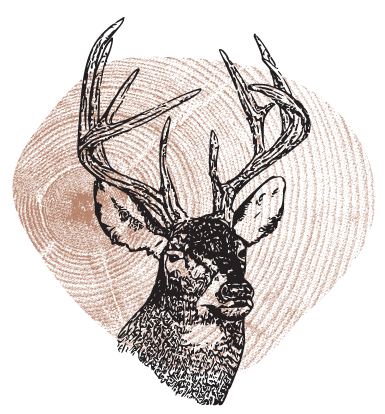Off-Season Whitetail Habitat Improvements


Another fall hunting season has come and gone, but for serious whitetail enthusiasts and those who actively manage habitats for wildlife, the season never ends. For the hunter, there’s postseason scouting, followed later by another round of pre-season scouting. For the land manager, there’s planning, then implementing ways to improve the habitat to provide better nutrition and more productive hunting. Scouting is primarily boots on the ground. Habitat management involves taking stock of what’s out there and applying good old-fashioned dirt wisdom to improve it.
The essential components of wildlife habitat are food, water, and cover, and the first step in planning should be to identify the lowest hole in the bucket – which element is in the shortest supply. If it’s water, there is not much a land manager can do beyond building ponds or tanks and praying for rain. Much more can be done to improve food and cover, and the best planners will find ways to maximize both.
It may seem counterintuitive, but cutting is one of the best ways to increase food and cover. A simple thinning or firewood cut will increase the sunlight reaching the forest floor, promoting new, young, and more nutritious growth and, eventually, a denser understory. Coarse woody browse is a significant component of the whitetail’s winter diet and will flourish in the form of stump sprouts, suckers, and seedlings. Pioneering plants like poplar, birch, alder, and brambles will quickly occupy disturbed openings, providing a burst of food and thick cover later.
Habitat managers can take a passive approach and let nature take its course or take a more active role by planting those openings with species that provide the most benefit. The brambles mentioned, like blackberries and raspberries, offer a prime example. They’ll flourish in gaps and very quickly give both food and cover.


Mulberries, plums, and persimmons are other examples. Initially, they’ll provide soft mast to fill potential early fall food gaps. As they mature, they’ll grow into dense thickets of cover where deer and other wildlife can feed and bed safely. The safer they feel and the more food they find, the more time they’ll spend there.
That philosophy can be enhanced by providing food and cover that best meets the whitetail’s year-round nutrition and security needs. Again, this involves identifying gaps. Surprisingly, late summer is often a nutritional gap as herbaceous vegetation is dying and the hard mast has yet to fall. Early soft mast producers fill this gap nicely. Late soft mast then fills the next gap until the first hard mast, like white oaks, begins bestowing its bounty. Then come species like chestnuts and red oaks. Depending on deer densities, their nut crops may last well into winter. If not, late-season food plots of winter wheat and brassicas can help deer squeeze through the bottleneck of winter.
Having a mix of perennial and annual plots is also helpful. Once established, perennial plots will provide the first nutritious greens in early spring. As their nutritional value starts to ebb, annual spring plots will just be reaching their maximum. In turn, they’ll later be out-gunned by late summer annual plots that persist and provide into the fall.
Planting a variety of hard and soft mast and herbaceous food plot species offers another advantage besides providing more and different food over a longer time span. It represents a hedge – no pun intended – against annual climatic fluctuations. In a dry year, brambles like raspberries and blackberries may be less productive, but other soft-mast producers like mulberries, plums, and persimmons may still produce fruit.


White oak acorns mature in one year, while red oak varieties take two. Red oaks may take up the slack of a poor white oak mast crop in a dry year preceded by a wet year. Chestnuts bloom later in the spring, so they are far less susceptible to broad-scale mast crop failures caused by late freezes that could affect both oak varieties – plugging more holes in the nutritional bucket.
When planning and planting, it’s essential to consider individual species not as discrete entities but as a piece of the puzzle, especially on more significant properties. Rather than producing monoculture stands – hard mast in one area and soft mast in another – it may be more effective from both a nutritional and hunting perspective to create a mixture so that deer don’t need to travel as far to find the food and cover they seek.
Planting hard masts next to a food plot is a good approach, but a better one is to fill in the edge or ecotone between them – the preferred habitat of whitetails – with soft mast-producing shrubs. Large food plots are built for agricultural efficiency and more for providing nutrition than hunting. Place smaller plots or mast orchards between larger plots and bedding cover, and deer will be more inclined to visit those areas during daylight. Put the right pieces to the puzzle in the right hole, and the whole becomes more significant than the sum of its parts.


